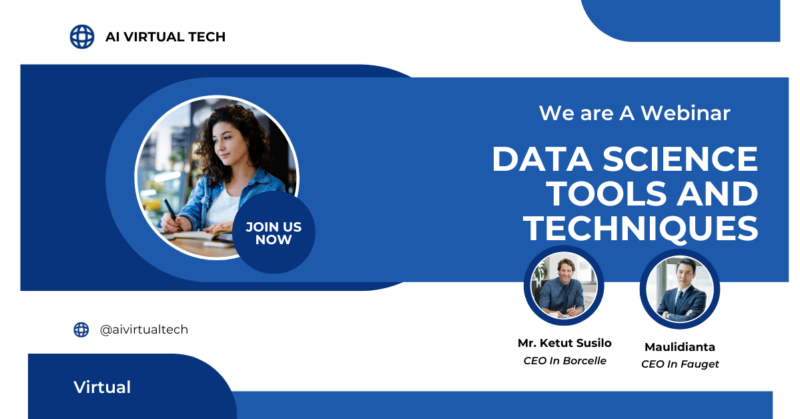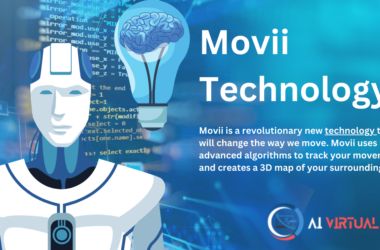Data science tools and techniques are transforming how businesses analyze and utilize enormous data sets. This article provides an illuminating exploration of these powerful tools and techniques, highlighting their value and diverse applications.
1. Introduction to Data Science Tools
- Data science tools are the building blocks that enable data scientists to extract meaningful insights from complex data sets.
- These tools, which range from programming languages like Python and R to software like Tableau and PowerBI, enable efficient data manipulation, visualization, and analysis. They represent the foundation upon which data-driven decision making rests.
- Data science techniques, on the other hand, refer to the methodologies employed to analyze and interpret data.
- These techniques, including regression analysis, clustering, and machine learning, provide the scientific rigor necessary to derive actionable insights from raw data.
- Together, a comprehensive array of data science tools and advanced techniques form a powerful and formidable arsenal in the hands of a highly skilled data scientist.
- With their expertise, they are able to unlock the true potential of raw data, extracting and transforming it into valuable and actionable business insights that drive growth, efficiency, and innovation.
- This ability to bridge the gap between data and decision-making is what makes data science an indispensable discipline in today’s rapidly evolving business landscape.
2. Python and R: The Power Duo
Python, with its user-friendly syntax and extensive library support, is ideal for data manipulation and analysis. Its flexibility makes it a favorite among both beginners and seasoned data scientists.
R, on the other hand, is a statistical powerhouse. Designed specifically for statistical computing and graphics, it offers advanced capabilities for data analysis.
Its extensive package ecosystem allows for specialized statistical analysis, making it a go-to choice for many data science professionals.
With their distinct strengths, they seamlessly complement each other, enhancing the comprehensiveness and effectiveness of the analytical process.
Together, they provide a formidable arsenal to tackle even the most complex data challenges, enabling deeper insights and informed decision-making.
3. Visualization with Tableau and PowerBI
- Visualizing data is a critical aspect of data science. Tools like Tableau and PowerBI excel in this regard.
- Tableau provides an intuitive interface for creating dynamic, interactive dashboards and reports, enabling data scientists to communicate complex insights in a visually appealing and easily digestible format.
- PowerBI, a business analytics service provided by Microsoft, enables users to visualize and share insights across their organization.
- Its integration with other Microsoft products makes it a popular choice for businesses already using the Microsoft ecosystem.
- With PowerBI, organizations can gain valuable insights from their data and make data-driven decisions.
- The interactive and intuitive visualizations offered by PowerBI allow users to explore data, identify trends, and communicate findings effectively.
- By leveraging its powerful features and seamless integration with other Microsoft tools, businesses can streamline their analytics processes and drive better outcomes.
- PowerBI truly empowers organizations to harness the full potential of their data and unlock new opportunities for growth.
4. Machine Learning Techniques for Data Analysis
Machine learning, a subset of artificial intelligence, is a powerful technique for data analysis. It involves training algorithms on a set of data, enabling them to learn patterns and make predictions on new data.
It’s a fascinating field with numerous applications. One such application is predicting customer churn, where machine learning models can analyze customer behavior and identify potential churners, allowing businesses to take proactive measures to retain their customers.
Another application is detecting fraudulent transactions, where machine learning algorithms can examine transaction patterns and flag suspicious activities, helping to prevent financial losses.
With its ability to uncover hidden patterns and make accurate predictions, machine learning is revolutionizing various industries and opening up new possibilities for solving complex problems.
As the field continues to advance, we can expect to see even more innovative applications and discoveries.
5. Statistical Techniques: Regression and Clustering
Regression analysis is a statistical technique used to understand the relationship between variables. It is often employed in predictive modeling, forecasting, and time series analysis.
By grouping similar data points together, clustering enables the discovery of patterns and relationships that may not be immediately apparent.
Both regression analysis and clustering are critical techniques in data analysis. They help us uncover insights and make sense of complex data patterns, ultimately enhancing our understanding and interpretation of the data at hand.
6. Big Data Tools: Hadoop and Spark
- When dealing with big data sets, tools like Hadoop and Spark are commonly used. Hadoop is a framework that allows distributed processing of large data sets across computer clusters.
- On the other hand, Spark is a fast and versatile cluster computing system. It provides a programming interface for working with entire clusters, offering implicit data parallelism and fault tolerance.
- Hadoop enables the processing of large data sets by distributing the workload across clusters of computers.
- With its distributed file system (HDFS) and MapReduce programming model, Hadoop provides scalability and reliability for big data applications.
- In contrast, Spark is a cluster computing system that excels in speed and versatility. It offers a unified computing engine that supports various programming languages and data processing models.
- Spark’s main strength lies in its ability to perform in-memory processing, making it significantly faster than traditional disk-based systems.
- With its advanced features like Spark SQL, Spark Streaming, and machine learning libraries (MLlib), Spark has become a popular choice for big data processing and analytics.
Summary
The article provides an overview of big data techniques, discussing the importance of data analysis and clustering. It delves into the functionality of big data tools, Hadoop and Spark. Hadoop, a framework that allows distributed processing across computer clusters, offers scalability and reliability for big data applications. Spark, on the other hand, provides a fast, versatile computational engine that supports various programming languages and data processing models. Its in-memory processing ability and advanced features such as Spark SQL, Spark Streaming, and MLlib make Spark an effective solution for big data processing and analytics.
Questions and Answers
- What is the main purpose of Hadoop and Spark in data analysis?
Hadoop and Spark are tools that facilitate the handling and analysis of big data. Hadoop allows distributed processing of large data sets across computer clusters, providing scalability and reliability. Spark, on the contrary, is known for its speed and versatility, supporting various programming languages and data processing models.
- What is the advantage of Spark over traditional disk-based systems?
Spark’s ability to perform in-memory processing makes it significantly faster than traditional disk-based systems, enabling more efficient data processing and analytics.
- What is Hadoop’s distributed file system (HDFS)?
HDFS is Hadoop’s built-in system for storing large amounts of data across clusters of computers. It is designed to provide high-throughput access to application data and is suitable for applications with large data sets.
- What are the advanced features of Spark?
Some of Spark’s advanced features include Spark SQL for manipulating structured data, Spark Streaming for processing live data streams, and MLlib for machine learning tasks.
- Why is data clustering important in data analysis?
It’s essential in data analysis as it helps uncover insights and make sense of complex data patterns, thereby enhancing our understanding and interpretation of the data.
Conclusion
Hadoop and Spark are powerful tools in the realm of big data analysis. Hadoop, with its distributed processing capability, offers a robust solution for handling vast amounts of data. Spark’s speed, versatility, and advanced features, on the other hand, make it an excellent tool for efficient and comprehensive data processing and analytics. Both facilitate the uncovering of insights from complex data, proving instrumental in advancing data-driven decision-making in various industries.













